This week, I’m stepping back in time – a long way: to 1980 in fact, when I sold my first Rachel Summerson novel, Hearts are Trumps, to Sidgwick & Jackson. The following year, it came out in America, published by St Martin’s Press who renamed it Belgrave Square: A Novel of Society.
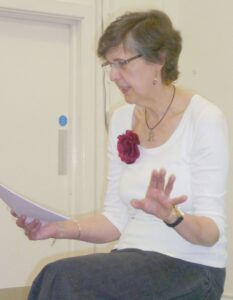
Me lecturing at Caerleon Writers’ Holiday, something I enjoy doing.
Hearts are Trumps was my first published novel. I had been writing since I was a child and had completed at least four other books, and left several more unfinished. You might say that I’d learnt on the job, although, until Hearts are Trumps was published, no-one else except my agent and publisher had actually read anything I’d written. I wrote in long hand on the right hand side of a couple of pads of A4 lined paper – the left hand side being reserved for notes to self, e.g. bring in cat episode here? and Check opening day of London Underground, 1863, or to tell myself that something wasn’t working and I must sort it out.
Once I’d finished the novel, I then typed it out – with a carbon copy, and an awful lot of Tippex – which painted over errors in white, so that I could re-type over the mistakes. The ‘cut and paste’ was literal; I typed out any section that was too big to be tippexed, cut it out and stuck it on the typescript in the appropriate place. This was the stage where I edited the novel as I went and put in all the corrections I’d noted.
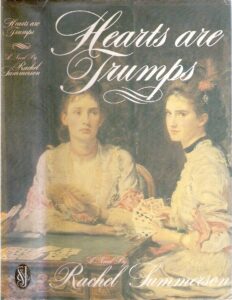
Hearts are Trumps, published by Sidgwick & Jackson. 1980
My publisher got the top copy, with its literal ‘cut and paste’, and I retained the carbon copy. And this is where my friend Hermione came in. She had been following my career with interest (bless her) and I lent her the carbon copy which she promised not to lose. And I awaited her response.
I was astonished to hear, when she returned my carbon copy (she enjoyed the book), that she’d invented a subsequent history for two of the characters, Algy – the hero’s handsome brother, and Anny, his mistress. What was interesting, though, was that her version of what happened to Algy and Anny in the future was not what I, the author, had envisaged but something completely different.
I was initially thrown by this unexpected development. They were my characters, dammit, how could Hermione have just walked off with them and given them a totally different future? As we talked, I gradually realized that my friend’s own emotional experiences had made her attach herself to those two characters in particular and she had given them the afterlife she needed them to have.
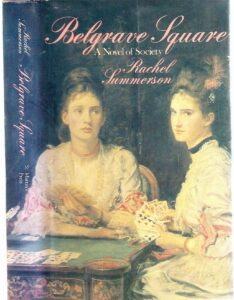
Belgrave Square: A Novel of Society published by St Martin’s Press, U.S.A. 1981
I thought about this on and off over the next few days and the ‘Hermione factor’ emerged, which is this: Readers need ‘fantasy space’, that is space to bring something of themselves to the story; the fact that I had a different ending in mind for Algy and Anny was less important than allowing my reader (Hermione) to take something from the book and make it her own.
Each reader has his or her own contribution to make to the reading experience and it’s as important to the reader as the authors’ story is to the writer. In other words, readers have a relationship with a book which is independent of the authors’ own relationship.
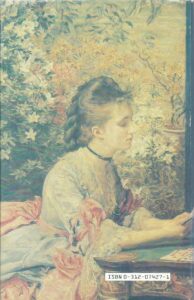
Hearts are Trumps/Belgrave Square back cover
Up to that point, I’d never considered how readers read but I immediately realized that this ‘fantasy space’ was important and I had to allow for it. It’s a triangle: the author’s story; the novel’s characters and their various problems and situations; and the reader – usually unknown to me. At some point, authors must cut the umbilical cord between themselves and the story and set it free.
The Hermione factor also has an effect on the ending and how authors tie up loose ends. Yes, the readers are entitled to know what happens to the major characters – but not in such detail that they cannot take it forward themselves, perhaps in a different direction, if they so wish. Tell the readers too little at the end and they may be left feeling that you’ve left them adrift, which is unsatisfying. Tell them too much, and they may resent it. It’s a fine balancing act.
So how did it all turn out for Hearts are Trumps? It went into paperback, and I sold the radio rights for a six episode radio play. My agent warned me that 95% of radio, TV or film rights sold never see the light of day. ‘It’ll buy you a new washing machine,’ he said. He was right – and I did buy a new washing machine with the proceeds. All the same, I was pleased that someone else had seen the potential. I’d started my career in Fringe Theatre, writing and directing plays. A play of mine had been commissioned for the Edinburgh Festival; I knew how to get characters on and off stage, and how to write convincing dialogue.
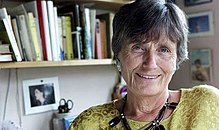
Margaret Forster (1938-2016) Courtesy of Wikipedia
And I had a great review from the writer Margaret Forster, whose work I much admired. Hearts are Trumps is about a family of daughters who, as Margaret Forster put it: ‘are in different ways obsessed by marriage. What makes this distinctly not a pastiche of umpteen novels on this theme is, in a word, sex. Not that the author has done anything so crass as to dole it out in vulgar dollops but she has looked at this important subject carefully and removed it from the Victorian novelist’s taboo. She says, in effect, let us go back and look at this commonplace girl in this commonplace situation and using 20th century frankness let us see what difference it makes. It makes a good deal of difference . . . . ‘
I remember thinking, when I read the review: ‘Good God! It’s not that much about sex!‘ I thought I’d written a sort of Victorian Georgette Heyer! I re-read it before writing this blog, probably for the first time in 30 odd years, and Margaret Forster was right. It’s very intensely written, in fact, as I read it, I felt as if I’d been seized by Coleridge’s Ancient Mariner and held in a vice-like grip. And it didn’t pull its punches about sex either.
So, there you are.
I’m looking forward to the end of lockdown when I can once more go out and see interesting places, visit art galleries and museums and so on and write blogs about them all!
Photo: the book cover is John Everett Millais’s Hearts are Trumps, Tate Britain, London.
Elizabeth Hawksley
Please share this page...
An illuminating post, Elizabeth, and so useful for an author – we need to remember our readers have minds of their own and like to enjoy our characters. Thank you for this timely reminder!
Thank you for your reassuring comment, Sarah. It’s good to know that other writers understand what I mean and agree with me! It’s easy to forget that one’s readers will have had different life experiences to your own and may not react in the way you think they will!
I agree with this so much. The reader experience is a fascinating subject. We have to remember that readers throw up the images they imagine as they read the book. They bring their experience to the emotional journey, which may very well not be the experience of the author, or what they even meant! It makes for interesting responses to books, which vary considerably person to person. I think this is why readers are nearly always disappointed with films. The actors are never going to match the picture they threw up themselves. You have to get over that and accept the filmic version as what it is if you are going to enjoy it.
Very interested to hear you had a theatrical background (as did I). It really does fuel the writing, I find, in all aspects – shape, emotion, sub-text, character, motivation, to name but a few as well as dialogue.
Thank you so much for your comment, Elizabeth – I agree with everything you say! And you are certainly right about films.I can think of a number of film versions of Jane Austen’s novels which I didn’t like as much as I’d hoped because one of other of the characters were, I felt, woefully miscast!
I find the process of craft, be it writing or ceramics, as interesting as the finished product so really enjoyed this post. Would like more, maybe something from your lectures at writers’ holidays.
Thank you for your comment, Jess. I taught for many years at the Caerleon Writers’ Holiday and elsewhere. I shall consider a compilation of my three greatest tips for novelists, say. Though I must admit that, at the moment, I’m longing to be able to get out and about and see interesting places and go to exhibitions again!
I know what you mean, though, about the fascination of watching the processes involved in creating things. Perhaps that’s why I like those TV programmes: The Great Pottery Throw Down, and The Great British Sewing Bee!
Another fantastic post.
I would be interested in reading more of what you have to say about writing techniques and your experiences as a writer in future posts.
Bless you, Huon, how kind. I shall certainly think about it.
Every reading of a novel is a creative collaboration between the author and the individual reader, we read ourselves into the world and the lives of the characters and inhabit them fully, although obviously not always as the author envisioned them, as you found with your friend. As Alberto Manguel in his “History if Reading” puts it succinctly “You are the only reader while the reading lasts.”
The urge to continue living in the imagined world that the author and reader create together helps to explain the popularity of on- line fan fiction . Apparently admirers of Star Trek are particularly prone to this!
Thank you for this, Pauline. I love the Alberto Manguel quote, too. How true! I’m sure you are right about fan clubs, too! And it certainly explains all the books featuring Jane Austen characters – including some unexpected new ones, from vampires to sea monsters!